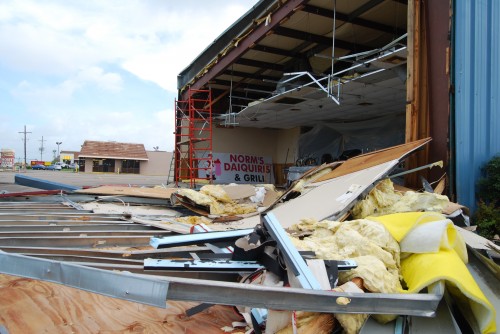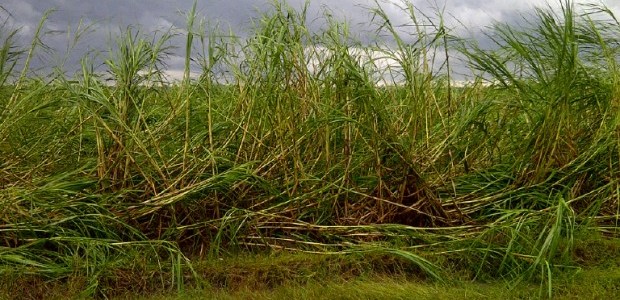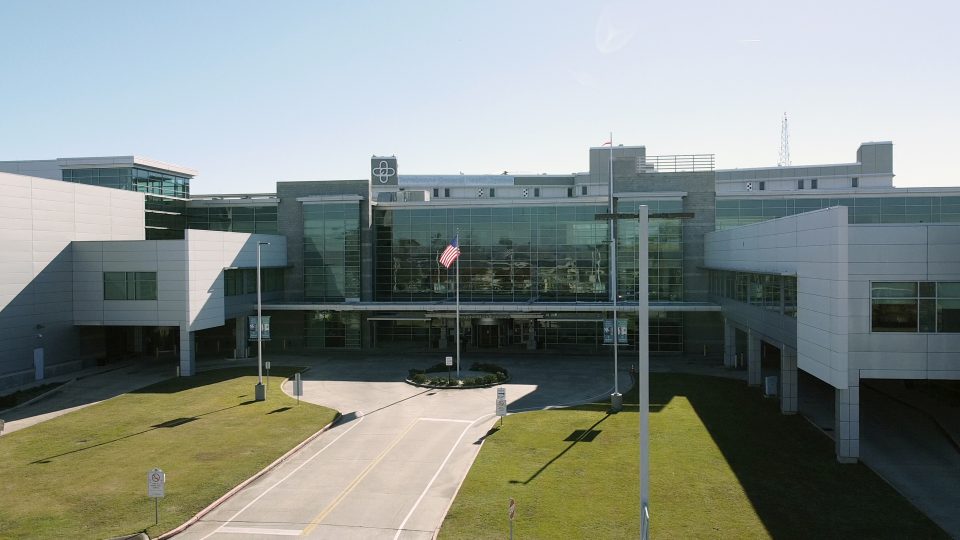
Prep Roundup: Week 1
September 5, 2012
Damage to businesses limited, but hard
September 5, 2012What did multiple acres of Louisiana sugar cane fields look like after Hurricane Isaac left the region? “Flat,” said USDA Research Scientist Paul White.
Sustained winds at the USDA Ardoyne Farm in Houma were registered at 49 mph and 7.2 inches of rain fell on the research crop while Isaac passed overhead. Wind speed and rainfall were reported significantly higher in areas where the northeast quadrant of the storm hit.
“It’s going to be hard to cut,” White said as area farmers look toward the end of September for their initial beginning of sugar cane harvest. Saturated ground from a rainy summer, combined with the storm, could make getting into the fields an added challenge.
“We’ve still got a month to go before grinding [begins] so cane is going to curl back up instead of producing sugar,” White warned.
The research scientist agreed with LSU Agriculture Extension Agent Bennett Joffrion that what was expected to be a bumper crop this year might not live up to promises.
“We have not even finished planting yet [in some areas],” Joffrion said. “It is normally all planted by now, but we’ve had so much rain that only 50 to 60 percent has been planted.”
Bryan Harang farms sugar cane in Lafourche Parish and said it is too early to predict with any accuracy what to expect.
“The high winds blew it down, broke some [stocks], shredded some leaves and lodged the cane pretty bad,” Harang said. “The sun will erect it some with a big crook.”
Harang said the greatest threat to the sugar cane crop is standing water. “That may be as harmful as anything. Especially cane that was just planted,” he said.
American Sugar Cane League General Manager Jim Simon was more optimistic. He said although the season will be dampened for some areas, it is not expected to be a total washout for the state.
“Of the 400,000 acres we have planted, it looks like areas along Bayou Lafourche were hardest hit,” Simon said. “The good news is that the cane appears to be laying in one direction and not twisted or broken.”
During Louisiana’s 2011 season, sugar cane farmers produced 1.4 million tons of raw sugar. “We still expect to do at least that or more this year,” Simon said.
Joffrion said lodged sugar cane will increase harvesting costs, but commodities broker Lonnie Cohen of Capitol Commodities Service said it is too early to predict what future prices might offer.
Harang said it is difficult to predict what kind of losses the sugar cane industry can expect, because farmers are unaware what they have following the storm. “It is definitely something we would have preferred not to get, but to tell you it is catastrophic would not be telling you the truth. We’ll get through it.”
As of mid-day Friday, sugar was trading at 19.77 cents per pound, which was down from more than 20 cents per pound before Isaac hit. Cohen expects prices to rebound and spring the crop back up from being temporarily flat.
Sugar cane fields lay flat in the wake of Hurricane Isaac’s pouding winds. Lafourche Parish sugar cane farmer Bryan Harang is optimistic the crop can be salvaged, but admits it is still too soon to tell.









